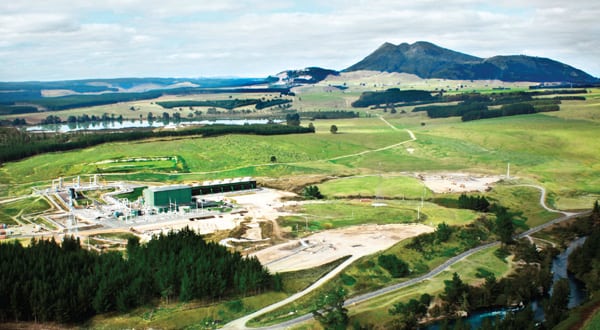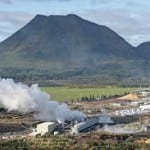One of the world’s largest geothermal power stations was officially opened this May on New Zealand’s North Island. A joint venture between Mighty River Power and Tauhara North No. 2 Trust, the new 140-MW Nga Awa Purua Geothermal Power Station (Figure 3) increases geothermal’s share of power in New Zealand to around 14%—a proportion that has more than doubled since 2005.
 |
| 3. Breaking new ground. New Zealand companies Mighty River Power and Tauhara North No. 2 Trust officially opened the 140-MW Nga Awa Purua Geothermal Power Station on that country’s North Island. The NZ$450 million project is among the largest in the world. The Cerro Prieto power station in Mexico takes the title for the most capacity (720 MW). Courtesy: Mighty River Power |
Construction of the NZ$450 million (US$300 million) plant began in May 2008 and was commissioned in April—ahead of schedule, on budget, and with a greater capacity than originally anticipated, Mighty River Power said in a statement. The company added that the plant required massive equipment, which was “inched” through forest roads at night. After being shipped from Yokohama, Japan, the plant’s turbine, generator, and condenser were moved via state highways to the site on specialized transporters—a “painstaking” journey that took three days, Mighty River Power said.
Mighty River Power’s Nga Awa Purua project manager, Paul Ware, said the generator was the single biggest load, weighing in at 177 metric tons. This compares with a logging truck and trailer, which has a maximum weight on the road of 45.5 metric tons.
New Zealand, a country that boasts some of the earliest large-scale use of geothermal energy in the world, has a burgeoning geothermal power sector mostly concentrated around the Taupo Volcanic Zone.
Geothermal energy is expected to contribute an increasing proportion of the nation’s power in the future. Several large geothermal projects are under way: Mighty River and the Trust are also investigating other prospective geothermal sites in preparation, and the companies recently received permits for a 110-MW geothermal power station on the nearby Ngatamariki field this May. Completion of that plant is expected by 2013.
Meanwhile, other companies are also forging ahead. Contact Energy’s NZ$100 million geothermal power station Tauhara One, near Taupo, was completed in May, three weeks ahead of schedule. The 23-MW station was part of the company’s NZ$600 million program to build new power plants and secure the country’s power supply. Contact is now seeking permits for a 250-MW Tauhara Two geothermal power station. At the same time, it is preparing to develop the 220-MW Te Mihi power station, a plant that already has all required consents.
The new plants have been opened just as the country begins a dry winter season. During the winter of 2008, the country’s power sector braced for possible blackouts as hydro-storage lake levels plummeted 55% below average—the lowest levels since the country suffered its last power crisis, in 1992. That year, Contact Energy had just retired a 300-MW gas-fired plant because of asbestos contamination. Fears of a winter crisis sent power prices skyrocketing.










